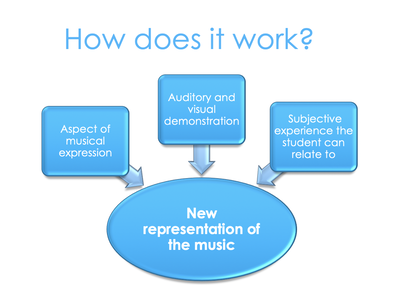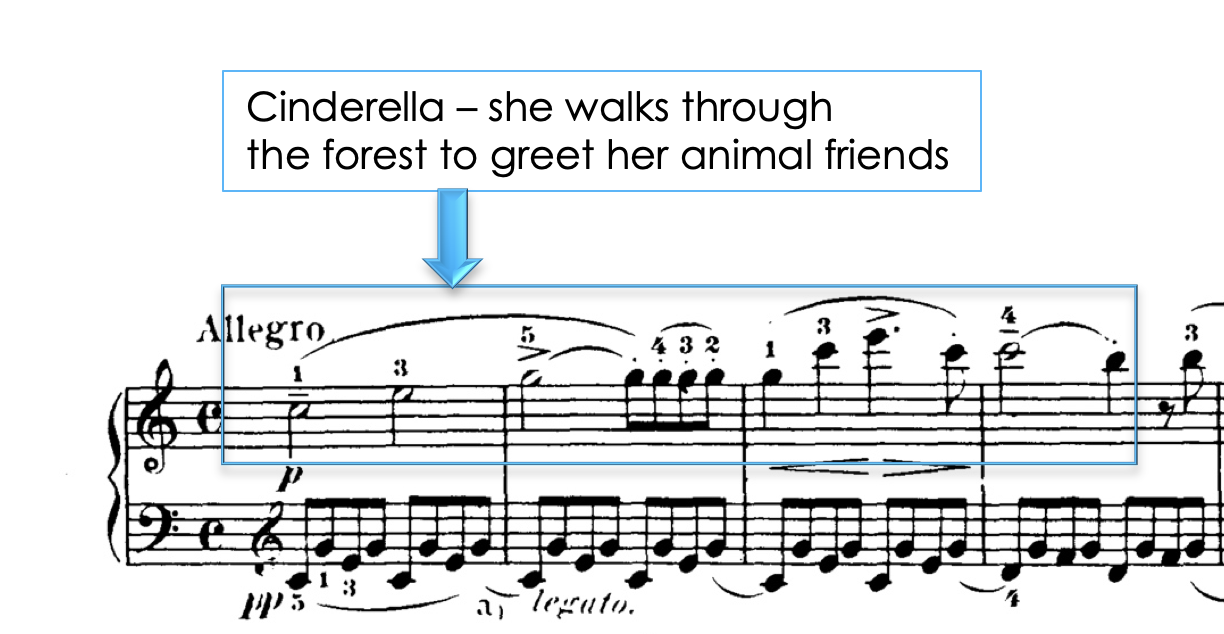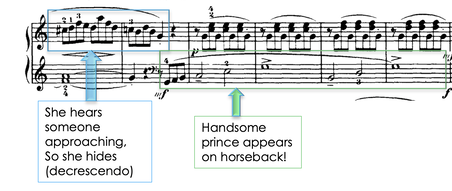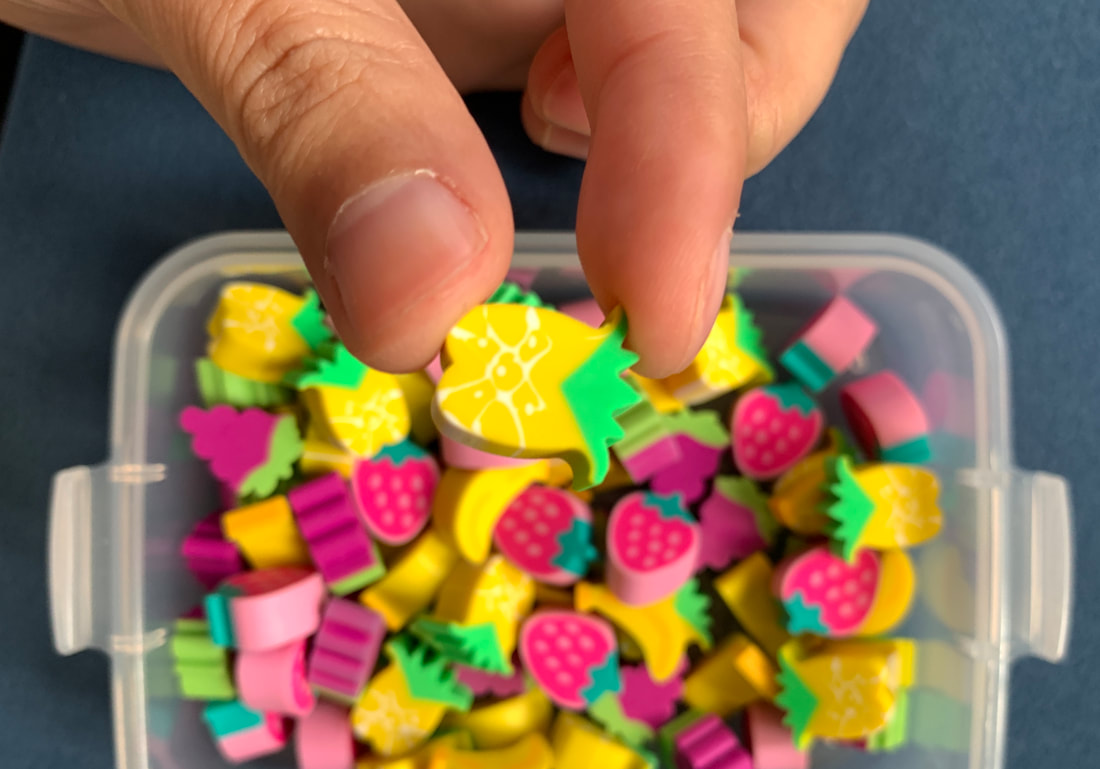|
This article was republished from the Ritmico Journal of IRMTNZ in August. Thanks Ruth for such a positive review of my presentation earlier on this year! "At Conference 2019, Melody Deng, gave a Analysis involves the student learning the basics of a piece, then at a later lesson listening to Melody play it, before working out ‘characters’ via phrases, dynamics and articulation. Initially students need considerable assistance, but they soon get into the swing of imagining, for instance: their heroes (loud dynamics, major key); an enchanted forest or sandy beach (major key, soft dynamics); a wicked witch (modulation to a minor key with loud dynamics). Interrupted cadences can provide comic relief, while modulations add drama to a piece. Interpreting the music through storytelling is fun and quickly understood.
Her belief that sonatinas offer excellent training for technique, passage playing, phrasing, form analysis and a pathway to harder repertoire, is not always met with enthusiasm by her students! However, Melody noted that sonatinas do not generally have imaginative titles – indeed, often no title at all beyond Sonatina, so she reasoned this means they are open for interpretation, aka storytelling. The presentation was well accompanied by video and audio recordings of a few of Melody’s pupils demonstrating the process. Melody also gave examples at the piano of how she shows students that the left-hand accompaniment can give an idea of the activity e.g. the steady pulse of Alberti Bass is like walking or riding in a carriage. The goal is that, in time, students become autonomous at analysis and interpretation, transforming music into their personal storytelling journey, and eventually extending this method to other genres and longer pieces e.g. sonatas. Melody shared a ‘cheat sheet’ with us that helps students create narratives and characters in a sonatina or sonata. We were invited to visit her website - www.ecbpiano.com - for regular blog posts and resources on teaching through storytelling and other creative teaching ideas. Ruth Stilwell has her own piano/theory teaching business, The Noteworthy School of Music, in Cromwell. She particularly enjoys playing baroque, modern and show music. Ruth's students perform regularly at retirement villages and other concerts.
1 Comment
A creative approach to enhance expressive playing in elementary and intermediate students through story-tellingIt was a pleasure to present my second talk at the APPC last week. The art of teaching through story-telling has always captivated me. In instrumental pedagogy, this is by no means a groundbreaking idea, and throughout my own lessons at the university of Auckland with teachers such as Rae de Lisle, Stephen de Pledge and Sarah Watkins, I observed this strategy being used to help students even at a tertiary level. So it is definitely a teaching tool that is used widely. In 2015 I completed a Master's degree in Piano Pedagogy. My research was based on how to foster musical expressiveness in a student’s playing. I discovered many interesting facets surrounding this topic, and one of them I am really fascinated in, is the use of story-telling in the lessons to help the students understand and express music they are unfamiliar with. For this session, I wanted to focus on using storytelling techniques to help children learn music they are initially "uninterested" in. I feel that children have a nature inclination to be interested in the popular, jazz, and romantic genres, and after speaking to many teachers on this subject, the classical repertoire seem to be one of the most ignored genre of music, especially during the first few years of piano learning. One of the most memorable moments durying my research was when I interviewed NZ pianist and composer, Gillian Bibby. She has taught many accomplished Kiwi pianists and conversations with her are always so inspiring. When I asked her about when it is appropriate to bring in the stories she indicated that it can be used to polish a piece once all the notes have been learnt, and it is so important to have originality and creativity with the stories: “Particularly when the notes and technique has been done, we need the stories even more. You don’t just do this one loud and this one soft, that’s boring! But if this one is the witch going into the cave to meet the dragon, and in the repeat the dragon is curled up in a ball, saying hello to the witch. That is such an extraordinary image! That would make such a big difference in a piece of music! That was my story, and I would ask them, ‘'What is your story?’” – Gillian Bibby, on teaching expressivity. How adding a narrative can help The beauty of sonatinas and sonatas are that because the titles are all the same, we can help children interpret them into a story their imagination can fathom and discover. When they can do so, you can instantly see their eyes brightening up and faces starting to beam, as they find themselves suddenly able to bring to life a previously boring sounding passage because it is now a part of a meaningful story. When story telling is used effectively, it can greatly enhance the character of the piece because it can provide a reason for any dynamic/articulation changes. Often the imageries help with any technical training. When a child is able to come up with their own story, it allows autonomy in their learning by stimulating imagination and creativity, which is why we get really fast results that last. Finally, the best part is how much more they seem to enjoy the music. It can be really fun. I can honestly say, my students that have been taught their classical pieces in this way from the very beginning, all love learning and playing the classical repertoire as much as their romantic and jazz pieces. By involving storytelling in their learning they know they get to be just as creative and expressive with these pieces. How to use story-telling effectively in the lesson? According to the results of my research, as teachers we first need to understand which aspect of musical expression we would like the student to improve. Is it the dynamics? Articulation? Over-all character of the piece? So we need to have a really clear idea of the final result before we start with the student. We then need to associate that aspect of musical expression with a subjective experience the student can relate to. The binding ingredient is to give an auditory or visual representation of the final musical product. For example, with a fast piece full of chromatic staccatos we can say to the student, “Play as if you are trying to outrun an army of swarming wasps!” (which in my books is a pretty imaginative metaphor) but unless the students hear exactly how fast the piece is, how short the staccatos are supposed to be and know how to physically make these sounds... He or she is unlikely to consciously produce and reproduce the desired musical result. So the nuts and bolts of these musical components, should be taught by modelling. Examples of using story telling in the lesson
Here I wanted to give an example of how to use the "cheat-sheet" with Sonatina in C, by Kuhlau: So if we go to the cheat sheet – does the piece have a melodic line? Yes, and it is in major key. So let’s say to the student, imagine the beginning is Cinderella gracefully wondering through the forest, and the repeated quavers in the second bar are like when she sees her animal friends, and takes a few quick steps to go and greet them. Next, does the piece have a conventional accompaniment? Yes! The alberti bass represents her soft footsteps – if you play it too loud, Cinderella will sound more like the ugly step sister!
Here is a short video of my APPC talk on a couple more examples of using storytelling in the lessons So hopefully today I have given a snippet of what you can do with the stories, and it will encourage your students to learn more music, not necessarily limited to sonatinas and sonatas! We want to use stories to encourage imagination, creativity and connection with the music.
Our goal is that in time, students become autonomous at analysis and interpretation, transforming music into their personal storytelling journey. Happy teaching! Melody Deng Effectively using technological and hands-on tools to enhance the piano learning experience I really enjoyed presenting my interactive workshop at the APPC. I was delighted to be given an opportunity to talk about something I am really passionate about - that is gamifying teaching and learning in the piano lessons. So how did I get so interested in games in the piano lesson? Well, I first started playing the piano at around about 3 years old. Thinking back to my first few years of piano learning as a preschooler, I was lucky enough to have my grandmother as my first piano teacher, and I remember I just loved practicing everyday. My grandmother had never formally studied the piano or any kind of educational pedagogy, but she clearly knew that play, fun and discovery based learning is how to entice a young child to love playing and learning the piano! Her ways of gamifying learning eventually became a big influence on my own teaching today, as I strive to harness the obsession kids have with games and use it to my advantage as a piano teacher. I was really excited to be able to share some of these games with my audiences, but because we had very limited time, I could only demonstrate one or two games on how each of the following aspects of piano playing could be gamified:
And of course, how could I not mention Note Rush! I use Note Rush all the time in my teaching, and I love the fact I can customise the notes I would like my students to practice each week. I also use the app to train for sight singing and relative pitch skills in my students. Here's a video of what I got the whole room of piano teachers to do: Thanks to the awesome creator of Note Rush, APPC delegates can get a free Studio Licence of the Dinosaurs theme! (requires purchase of Note Rush to redeem). Go to www.noterush.app/appc to redeem! This is for a limited time only.
Studio wide challenges: I also mentioned a couple of my studio-wide challenges. I have written about these previously on my blog: Student of the Week Polaroid Challenge, and Around The World Scales Race. Teaching Italian Terms and Expressions: I wanted to give everyone at my session a quick taste of how entertaining learning aspects of music theory could be. Traditionally when we teach Italian terms and expressions, we might give students a list of words they have to learn by the next lesson and we test on them on it. However, for such a theatrical and expressive language, there are many better ways of learning it! One of my favourite ways of doing so is to play a game of charades with students. For example here we have a list of Italian terms. I got two volunteers to come up act out one of these words to give clues, and the audience had to yell out the correct answer as fast as possible. Here's our entertaining clip from my talk: To conclude... I think I have scratched the surface of what we can do with games in the lessons during my talk. I believe pretty much any element of piano teaching can be gamified to some extend. As the famous nanny Mary Poppins once said: “in every job there must be done, there is an element of fun!”
What I hope I also demonstrated is that when games are used correctly as an educational tool, it has the benefit of giving instant feedback to the student in a fun and non threatening way. It allows us to extend our teaching beyond the studio and yet still have a role in designing and activating learning. And for me an unexpected positive outcome is that it gave me a chance to show our kids how relevant classical music can be in their modern lives, because as teachers we should never cease to think of ways to connect our students to their music every day. If you will be anywhere near Brisbane, on the 8-12th of July 2019, I would love to invite you to join me in the Australasian Piano Pedagogy Conference (APPC)
I am so excited to be presenting two talks in this conference, both topics are aspects of teaching I truly enjoy researching, exploring and constantly evolving in my lessons. The first talk will be on the 9th of July, from 13.45-14.30pm. It is titled: Interactive teaching games for the modern studio: Effectively using technological and hands-on tools to enhance the piano learning experience. I have always loved the idea of making learning entertaining, as I have always had fun learning the piano as a child. I first started playing the piano at around about 3 years old. Thinking back to my first few years of piano learning as a preschooler, I was lucky enough to have my grandmother as my teacher, and I remember I just loved practicing everyday. My grandmother had never formally studied the piano or educational pedagogy, but she clearly knew that play, fun and discovery based learning is how to entice a young child to love playing and learning the piano! Her ways of gamifying learning became a big influence on my own teaching today, so in this interactive session I will be sharing some of the games my students and I love playing in the lessons. There will also be some freebies and giveaways thanks to the awesome founder of the app Note Rush! The second talk will be on teaching through story telling which I did for the IRMTNZ Conference in Dunedin earlier on this year. This is scheduled for the 11th of July, from 13.45-14.30pm. I am so looking forward to catching up with fellow teachers as well as checking out the talks and concerts by the amazing lineup of pedagogues and pianists! See you soon, Brisbane! Melody A masterclass on breathing techniques to overcome performance anxiety, and a witty way to answer a curly question to young students. This week I attended the IRMTNZ Annual Conference in Dunedin. One of the highlights of the conference for me was Bridget Douglas’ masterclass. As a pianist and piano teacher, I have always been interested in how other instruments are learnt and taught, as I find lessons conducted by the top teachers of any instrument often spark inspiration and revelation to my own playing and teaching. Although I have never met Bridget in person prior to this conference, her name has always been familiar. Bridget is considered as one of the top performing flautists in New Zealand. She is currently the principle flute in the New Zealand Symphony Orchestra and the Artist Teacher at Victoria University in Wellington. It was a treat to finally see her in action – her exquisite presence, exceptionally good posture and reassuring smile led me to imagine if Disney was doing a live-action movie about classical musicians, she would be casted as the “flute-goddess”. And of course, one who has met Bridget cannot mention her without remarking on her dazzling head of hair. In the masterclass, a young student performed a grade 5 piece, “Violetta’s Aria” by Verdi on the flute. The student played with a good deal of musical sensitivity, and it is clear she knew this piece very well. It is never easy however for anyone to get up in front of room full of music teachers and play, and we could unquestionably hear her nerves intermingled into her timid sound. Bridget explained to the audiences who were not wind players that the breath is everything on the flute. The breath not only determines the length of the sound, but also the quality of the tone – from the biggest sounds down to the subtlest nuances and colours. Therefore, it is crucial any wind player knows how to breathe. Not just any sort of breathing, but deep breathing. Knowing how to deep breathe, not only help wind players have better control over their instrument, it can also benefit any instrumentalist when it comes to dealing with performance anxiety. Many studies have shown that slow, controlled deep breaths help to alleviate physiological symptoms of performance anxiety, such as an increase in heart rate, as well as emotion regulation whereas short, shallow breathing actually contributes to an unfavourable intensification of these symptoms (see this recent Australian Study). So now that we all know the importance of deep breathing, how exactly do we do it and what does it feel like? Bridget had the perfect method: Now, breathe in, feel the cold air brushing past your lips, then exhale. Step two: this time relax your lips and inhale. Concentrate on the feeling of cold air brushing past your teeth (ouchies for those like me who have sensitive teeth!), then exhale. Step three: wrap your lips loosely around your teeth again if you have sensitive teeth and feel the cold air swishing past your tongue this time, then exhale. Can you feel how your breath is getting deeper and longer? Good! You are on the right track! Step four: repeat step three but focus on the feeling of cold air running down the back of your throat and visualise the air going straight down to your pelvis, then exhale. Now how does that feel? Can you feel the difference between the “teeth” version and the “throat” version? Step five: now check your upper body posture. How is your posture now? Are you feeling more of an openness across your chest? Are you sitting/standing with a better posture? I found this to be such an effective way to demonstrate and teach anyone about deep breathing. Once a student knows what it feels like to deep breathe, then ask them to breathe in for 4 seconds, hold for 4 seconds, breathe out for 4 seconds, hold for 4 seconds. This is called “Square breathing”. On a separate note, a little anecdote I had to share with you… have you ever tried to explain a piece or character to a young student, but the subject of your account is most definitely R16 or R18? In this masterclass, in order to get the student to be more expressive with her phrasing, articulation and dynamics, Bridget had the delicate job of informing the young student the identity of Violetta, our protagonist in the opera. Bridget explained to the student the main character of the piece, who the student is supposed to embody and communicate through her playing, Violetta, is a courtesan. “Do you know what a courtesan is?” asked Bridget optimistically.
The student shook her head. I swear I remember Bridget looking around the room with a slightly devious smile (I could have imagined it): “A courtesan is usually someone who is... very free with her love.” The room burst into laughter. “A courtesan also has lots of boyfriends, and most of them are very rich men.” The student smiled. “In this piece, I think Violetta is singing about how much she would like to be free and not get tied-down. You know, she is not the marrying type!” Another rupture of laughter from the audience! So, there you go. If you ever find yourself in the situation where you have to describe to someone a “passionate” character, and they are too young to see Dangerous Beauty, a good word to use is “free”. Melody |
AuthorThis blog post is by Melody Deng Archives
September 2020
Categories
All
|
|
©2019 East Coast Bays Piano Studio | All Rights Reserved
|















 RSS Feed
RSS Feed